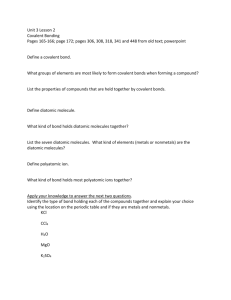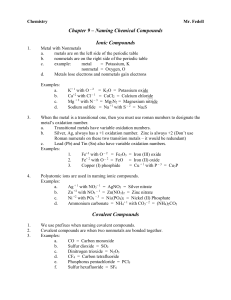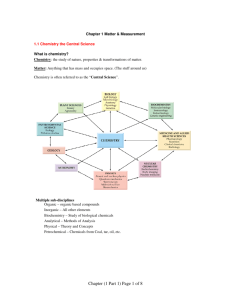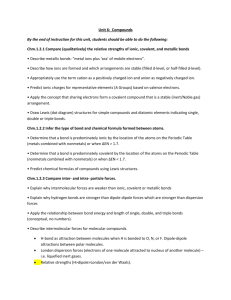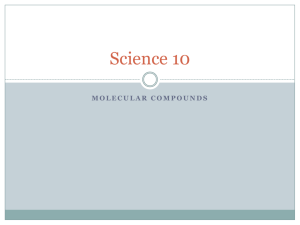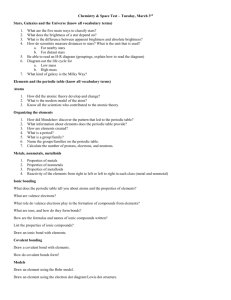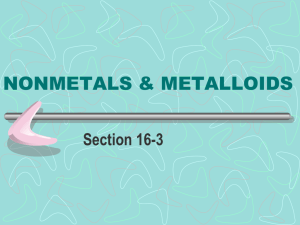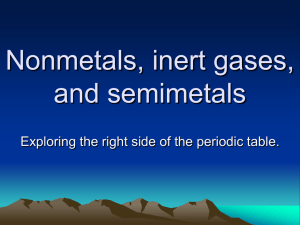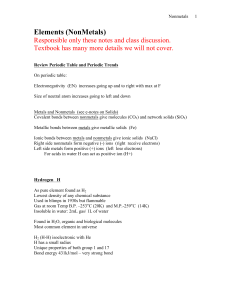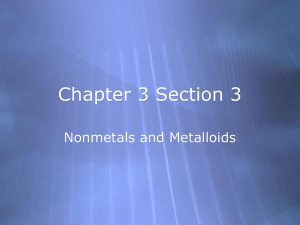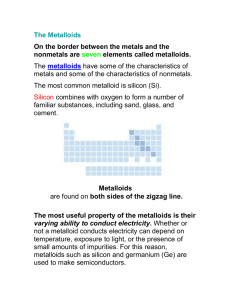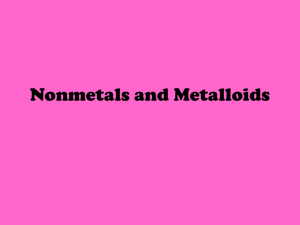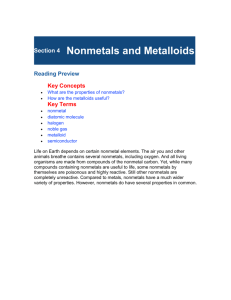19.2_fullnotes
advertisement
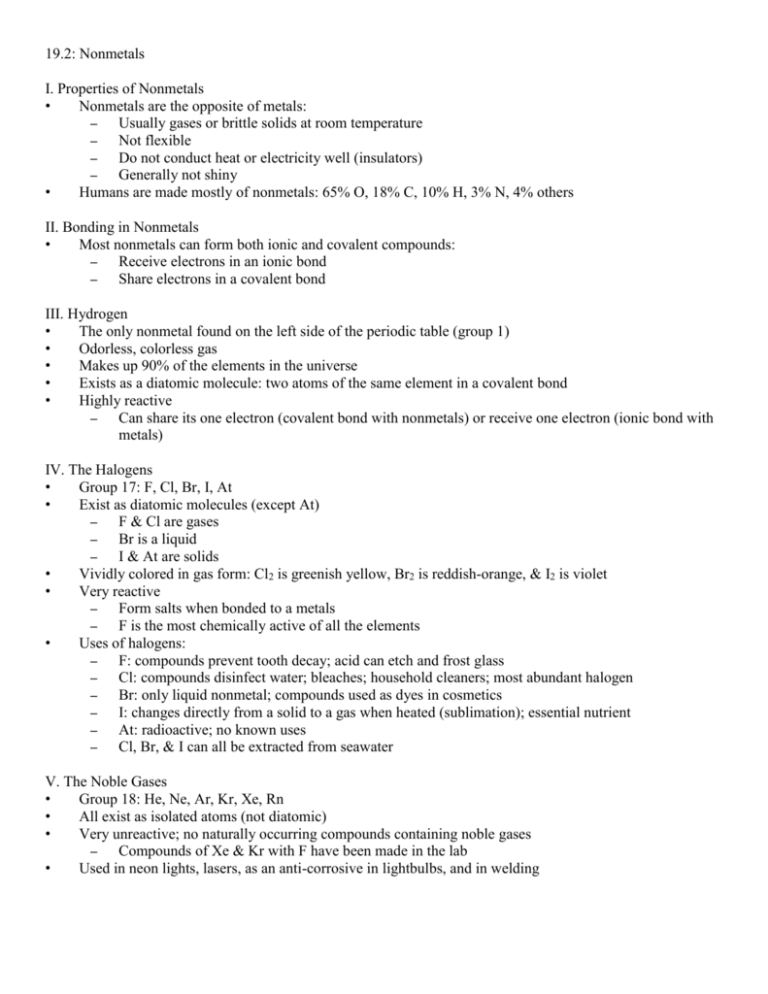
19.2: Nonmetals I. Properties of Nonmetals • Nonmetals are the opposite of metals: – Usually gases or brittle solids at room temperature – Not flexible – Do not conduct heat or electricity well (insulators) – Generally not shiny • Humans are made mostly of nonmetals: 65% O, 18% C, 10% H, 3% N, 4% others II. Bonding in Nonmetals • Most nonmetals can form both ionic and covalent compounds: – Receive electrons in an ionic bond – Share electrons in a covalent bond III. Hydrogen • The only nonmetal found on the left side of the periodic table (group 1) • Odorless, colorless gas • Makes up 90% of the elements in the universe • Exists as a diatomic molecule: two atoms of the same element in a covalent bond • Highly reactive – Can share its one electron (covalent bond with nonmetals) or receive one electron (ionic bond with metals) IV. The Halogens • Group 17: F, Cl, Br, I, At • Exist as diatomic molecules (except At) – F & Cl are gases – Br is a liquid – I & At are solids • Vividly colored in gas form: Cl2 is greenish yellow, Br2 is reddish-orange, & I2 is violet • Very reactive – Form salts when bonded to a metals – F is the most chemically active of all the elements • Uses of halogens: – F: compounds prevent tooth decay; acid can etch and frost glass – Cl: compounds disinfect water; bleaches; household cleaners; most abundant halogen – Br: only liquid nonmetal; compounds used as dyes in cosmetics – I: changes directly from a solid to a gas when heated (sublimation); essential nutrient – At: radioactive; no known uses – Cl, Br, & I can all be extracted from seawater V. The Noble Gases • Group 18: He, Ne, Ar, Kr, Xe, Rn • All exist as isolated atoms (not diatomic) • Very unreactive; no naturally occurring compounds containing noble gases – Compounds of Xe & Kr with F have been made in the lab • Used in neon lights, lasers, as an anti-corrosive in lightbulbs, and in welding
